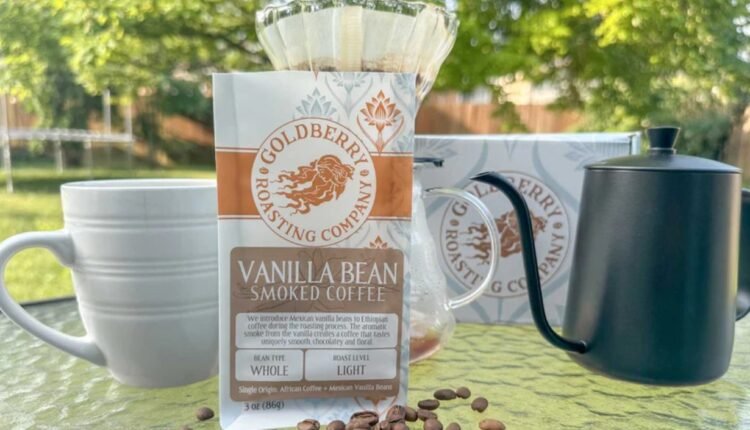If you’ve ever walked into a specialty coffee shop and marveled at the slow, deliberate process of brewing coffee, you’ve witnessed the magic of pour-over coffee. While espresso machines and French presses have their own charm, the pour-over method allows you to control every variable, resulting in a cup that truly reflects your taste preferences. This Guide To The Pour-Over Coffee Method will help beginners master the art of brewing perfect coffee at home.
What is the Pour Over Coffee Method?
The pour-over coffee method is a manual brewing technique where hot water is poured over coffee grounds in a controlled manner. Unlike automatic coffee makers, this method requires patience, precision, and attention to detail. By pouring water slowly and evenly, the water extracts flavors evenly from the coffee grounds, resulting in a balanced, aromatic cup of coffee. This Guide To The Pour Over Coffee Method emphasizes understanding each step to achieve consistency.
Essential Equipment for Pour-Over Coffee
To start, you don’t need a fully equipped barista station. A few basic tools are enough:
- Pour-Over Brewer: Popular options include the Hario V60, Chemex, and Kalita Wave. Each has a unique design affecting the flow rate and taste.
- Filters: Paper filters are common and ensure clarity, while metal filters allow oils through for a richer taste.
- Kettle: A gooseneck kettle is ideal because it offers precision in pouring.
- Scale: Coffee-to-water ratio is crucial; a digital scale helps maintain accuracy.
- Grinder: Freshly ground coffee produces more aroma. Burr grinders are preferred over blade grinders for consistent particle size.
This Guide To The Pour Over Coffee Method emphasizes that investing in quality tools enhances your brewing experience.
Selecting the Right Coffee Beans
The beauty of pour-over coffee lies in highlighting the unique flavors of your beans. For beginners, choose a medium roast with fruity or nutty notes. Avoid overly dark roasts initially, as they can overpower the delicate extraction. Freshness is key: coffee beans start losing flavor within weeks of roasting. Grinding beans just before brewing ensures maximum aroma and taste.
Step-by-Step Pour-Over Brewing Process
1. Measure and Grind Your Coffee
For a standard 12-ounce cup, use about 20 grams of coffee. Grind it to a medium consistency, resembling coarse sand. The right grind ensures proper extraction and avoids over-extraction or bitterness.
2. Prepare Your Equipment
Place your filter in the dripper and rinse it with hot water. This removes paper residue and preheats the brewer, ensuring a consistent temperature throughout brewing. Dispose of the rinse water.
3. Bloom the Coffee
Add your ground coffee to the filter. Pour just enough hot water (around 200°F) to saturate the grounds and allow them to “bloom” for 30-45 seconds. Blooming releases carbon dioxide and improves flavor extraction. This step is often overlooked but is essential in this Guide To The Pour-Over Coffee Method.
4. Pour in a Circular Motion
Slowly pour water over the coffee in small, circular motions starting from the center and moving outward. Maintain a steady pace to ensure even extraction. Avoid pouring directly onto the filter, which can create channels and uneven brewing.
5. Let the Coffee Drip
Allow all water to pass through the coffee grounds. The total brewing time should be about 3–4 minutes for a single cup. Adjust grind size and pouring speed as needed for future attempts. Consistency improves with practice, a principle central to this Guide To The Pour Over Coffee Method.
6. Enjoy Your Coffee
Once the water has drained, remove the dripper and give your coffee a gentle swirl to mix layers. Pour into your favorite mug and savor the delicate flavors. Pour-over coffee often has a cleaner, more complex taste compared to other methods, highlighting the nuances of your beans.
Tips for Perfect Pour-Over Coffee
- Use Filtered Water: Water quality significantly impacts flavor.
- Maintain Temperature: Ideal water temperature is 195–205°F. Too hot and you risk bitterness; too cool and the coffee may taste weak.
- Experiment with Ratios: Start with a 1:16 coffee-to-water ratio. Adjust according to taste.
- Consistent Grind: Uneven coffee particles lead to over- or under-extraction.
- Practice Patience: The slow, mindful process of pour-over brewing is part of the charm.
Troubleshooting Common Issues
Even with careful attention, beginners may face challenges:
- Bitter Coffee: The Grind might be too fine or the water temperature too high.
- Sour Coffee: Under-extraction due to coarse grind or too fast pouring.
- Weak Coffee: Coffee-to-water ratio might be too low.
Understanding these variables is crucial for mastering the method. This Guide To The Pour Over Coffee Method encourages adjusting one factor at a time to identify the cause of any problem.
Why Pour-Over Coffee is Worth Learning
Beyond taste, pour-over coffee promotes mindfulness and experimentation. Each cup is a mini-lab where you can adjust variables like grind size, water temperature, and pouring technique to suit your taste. It fosters a connection to your coffee that automatic machines cannot replicate. Following this Guide To The Pour Over Coffee Method ensures that beginners gain a strong foundation for long-term brewing success.
Conclusion
Mastering the pour-over coffee method is a journey rather than a quick task. With the right equipment, fresh beans, and attention to detail, you can consistently brew a cup that rivals your favorite coffee shop. This Guide To The Pour Over Coffee Method has outlined the essential steps, tips, and troubleshooting advice to help beginners start their journey toward perfect home-brewed coffee. Each cup is an opportunity to explore flavors, refine your technique, and enjoy the process of making coffee as much as drinking it.


Comments are closed.